Intel Core i9-13900K CPU Review
In case you missed how the battle began, Intel owns x86 while AMD…rents its piece of the market. This being Intel’s baby, you can imagine how it felt decades ago when AMD used its Athlon to crush the Pentium 4. The firm may have corrected its course with Core architecture, but it certainly wasn’t going to relive that painful past as AMD prepared to launch its Zen 4 architecture with up to 16 cores. Yet rather than double its performance cores to match, Intel decided to double the number of its weaker “Efficiency” cores to 16. While its new thirteenth generation cores also gets more cache than previous parts, those added efficiency cores aren’t likely to help much in the kinds of high-profile applications that drive buyers to purchase a new PC.
| Intel Core i9-13900K | AMD Ryzen 9 7950X | Intel Core i9-12900KF | AMD Ryzen 7 7700X | AMD Ryzen 5 7600X | |
| CPU Cores | 24 (8p+16e) | 16 | 16 (8p+8e) | 8 | 6 |
| Threads | 32 | 32 | 24 | 16 | 12 |
| Base Clock | 3.0GHz | 4.5GHz | 3.2GHz | 4.5GHz | 4.7GHz |
| Boost Clock | Up to 5.8GHz | Up to 5.7GHz | Up to 5.2GHz | Up to 5.4GHz | Up to 5.3GHz |
| L1 Cache | 2.1MB | 1MB | 1.4MB | 512KB | 384KB |
| L2 Cache | 32MB | 16MB | 14MB | 8MB | 6MB |
| L3 Cache | 36MB | 64MB | 30MB | 32MB | 32MB |
| Stated TDP | 253W | 170W | 241W | 105W | 105W |
| CPU Socket | LGA 1700 | AM5 | LGA 1700 | AM5 | AM5 |
Get it at Amazon

(click for availability)
Intel’s hardware improvements don’t look all that grand, but notice the frequencies: Intel’s engineers discovered ways to reduce the voltage needed for any give clock by up to 50mV. The frequency of 12th-Gen cores was almost completely determined by temperature, and the lower voltage levels of the revised cores would generate less heat. Now called Raptor Lake, engineers could increase the clocks of these revised cores by up to 600 MHz before reaching a similar thermal limit.

Remaining changes for the new core seem almost insignificant after discussing the changes in core count, cache and clocks, but Intel’s full document is still available here for those interested.
Test Configuration
We equipped our basic motherboard test platform with ASRock’s Z690 Taichi after upgrading its firmware to version 13.05 (09-19-2022) for Raptor Lake support. The same company’s X670E Taichi holds AMD’s processors.
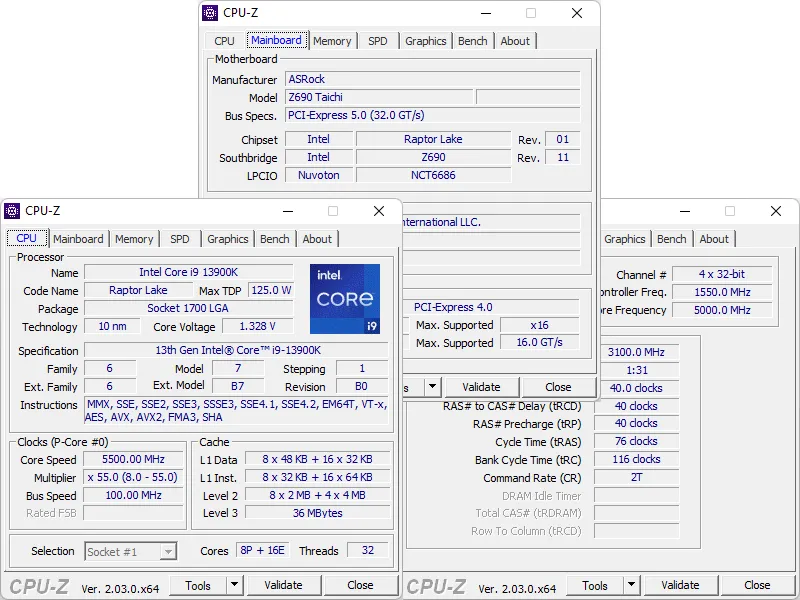
Patriot’s XMP-enabled DDR5-6200 C40 returns to support the Intel motherboard so that today’s results will be easier to use in future LGA 1700 motherboard reviews. Switching the Intel platforms back to XMP memory is simply a recognition that Intel motherboards won’t support AMD EXPO memory profiles. The Intel platform produced 0.5% better overall performance in our previous AM5 reviews when manually configured to the DDR5-6000 C30 EXPO.
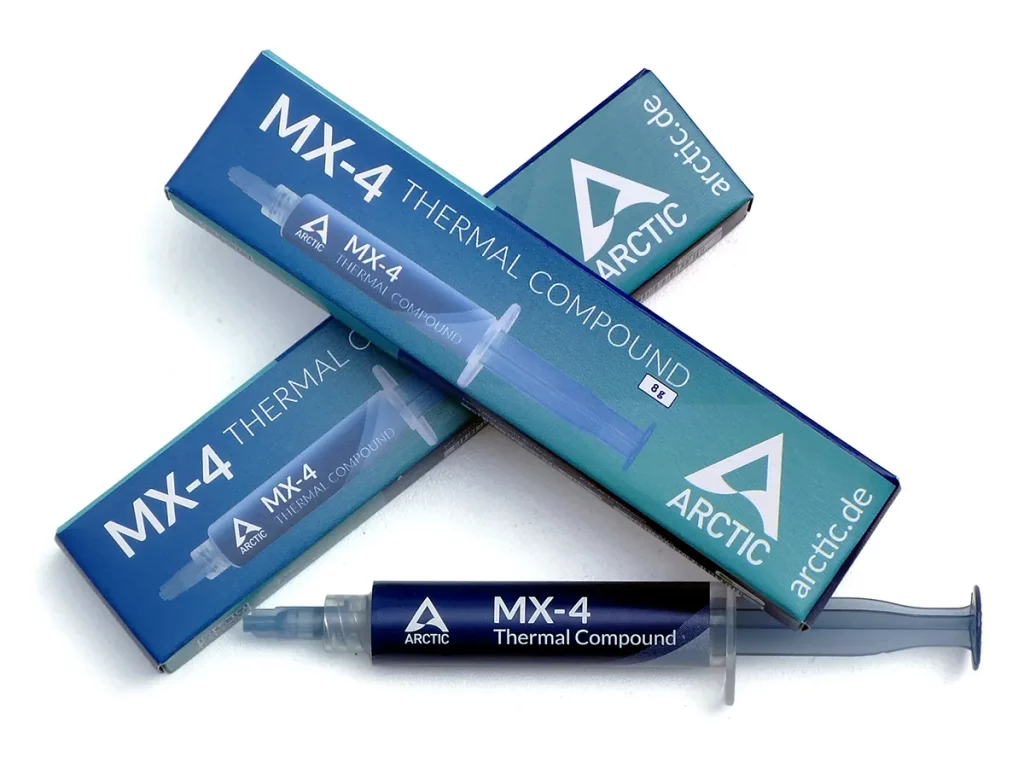
As the increasing number of CPUs we’re using has depleted our previous supply of Arctic MX-4, the company resupplied with two 8g syringes.
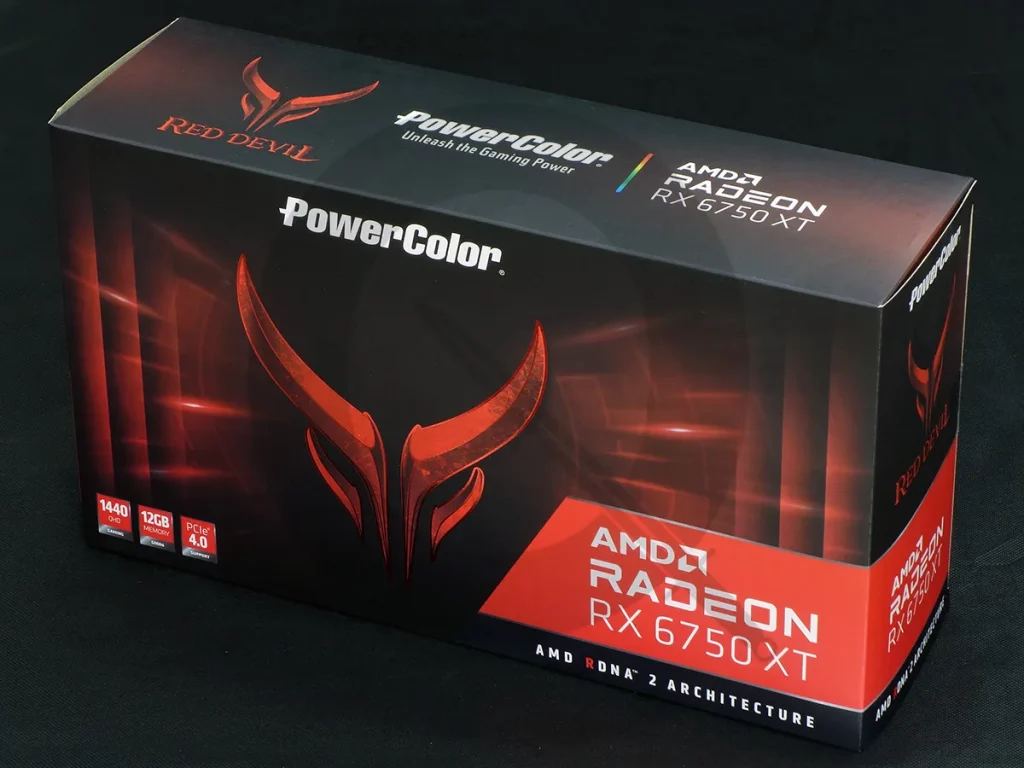
PowerColor’s Red Devil Radeon RX 6750 XT soldiers on from our Zen4 launch coverage to provide consistently high graphics performance.
| Test Hardware | |
| CPUs | Intel Core i9-13900K: 24C/32T, 3.0-5.8 GHz, 36 MB L3 Cache, LGA 1700 AMD Ryzen 9 7950X: 16C/32T 4.5-5.7 GHz, 64MB L3 Cache, Socket AM5 Intel Core i9-12900KF: 16C/24T, 3.2-5.2 GHz, 30 MB L3 Cache, LGA 1700 AMD Ryzen 7 7700X: 8C/16T, 4.5-5.4 GHz, 32MB L3 Cache, Socket AM5 AMD Ryzen 7 7600X: 6C/12T, 4.7-5.3 GHz, 32MB L3 Cache, Socket AM5 |
| CPU Cooler | Alphacool Eisblock XPX CPU, Eisbecher D5 150mm, NexXxoS UT60 X-Flow 240mm |
| Motherboards | ASRock Z690 Taichi: LGA 1700, BIOS 13.05 ASRock X670E Taichi: Socket AM5, BIOS 1.09 |
| Graphics Card | Powercolor Red Devil Radeon 6750 XT: 2324-2623MHz GPU, 12GB GDDR6 |
| DRAM | Patriot PVVR532G620C40K 2x16GB (32GB) DDR5-6200 CL40-40-40-76 1.35V G.Skill F5-6000J3038F16GX2-TZ5N 2x16GB (32GB) DDR5-6000 CL30-38-38-96 1.35V |
| Power | be quiet! Dark Power Pro 10 850W: ATX12V v2.3, EPS12V, 80 PLUS Platinum |
| Hard Drive | Sabrent Rocket 4 Plus 2TB PCIe 4.0 M.2 SSD |
| Sound | Integrated HD Audio |
| Network | Integrated Wi-Fi |
| Graphics Driver | AMD Adrenalin Edition 2022.10.1 |
Benchmark Results
We used the same memory for both the Core i9-13900K and the Core i9-12900KF, yet only the new processor shows an appropriate delay for the XMP-6200’s CAS40 rating. Both Intel processor belittle the AM5 platform’s memory bandwidth.

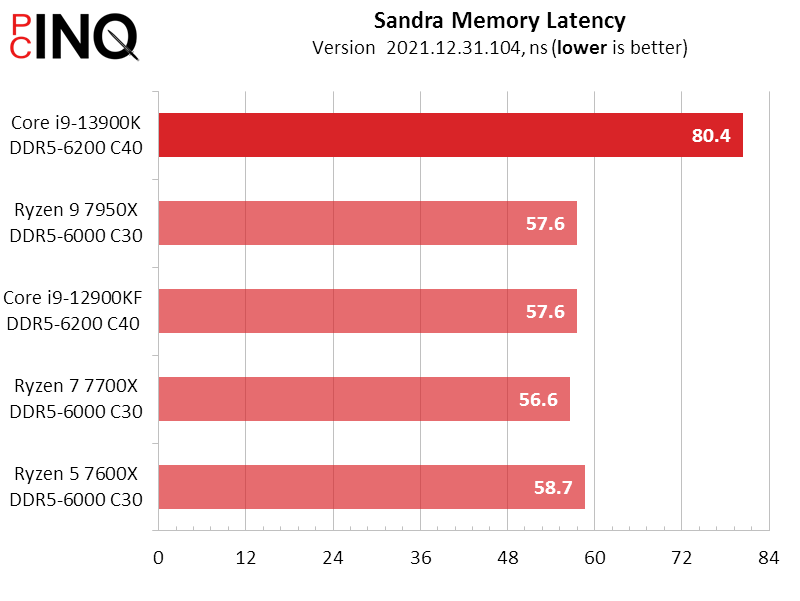

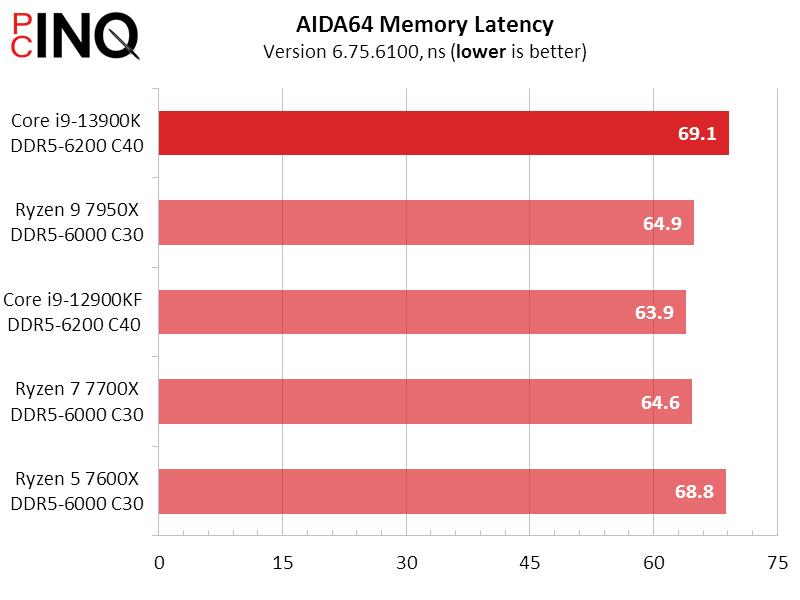
With its higher clocks, the Core i9-13900K wipes the floor with every other processor—even its older brother—in 3DMark Time Spy. The 7950X’s greater number of performance cores puts it into the lead for 3DMark’s CPU profile, but the Intel processors reclaim leadership in 3DMark Storage.




Core i9-13900K wins in PCMark 10 are somewhat inconsistent but still happen more often than not. Photo editing is the most significant of its losses to the Ryzen 9 7950X.




We love Ego-engine games for showing off memory bottlenecks, but today’s hardware has so much bandwidth that we’re forced to use stupefyingly low settings to produce astoundingly high frame rates, just to get some measure of scale. The 13900K wins at 720p medium, while the 7950x overtakes it as 720p ultra. For the 6750XT on ordinary displays, 1080p Ultra looks like a sweet spot.

The 7-Zip benchmark appears to prefer performance core count over bandwidth where both are important, but scrolling down to our real world file compression we find the 13900K’s bandwidth more advantageous than the 7950X’s brute force. AMD’s 7950X leads the 13900K in all remaining application benchmarks, and the old 12900KF falls into third place far ahead of single-CCD AMD processors.

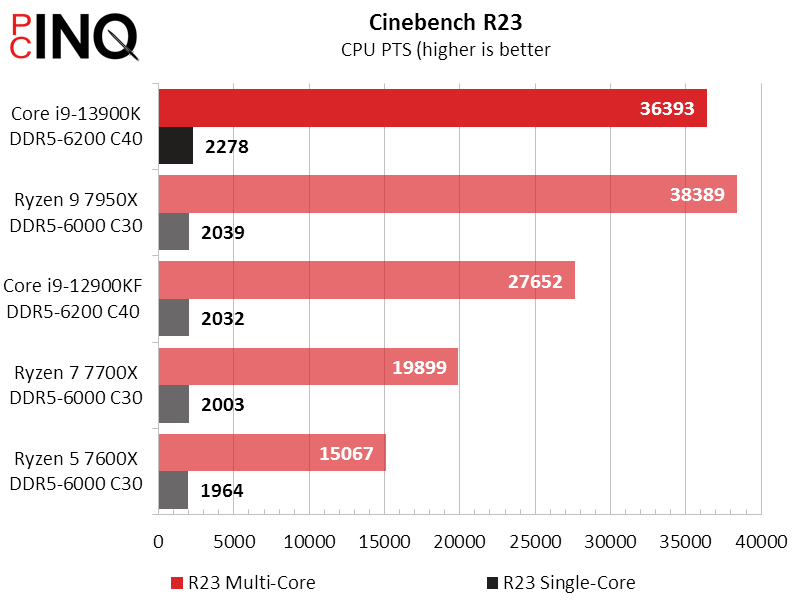


Regarding full load power consumption…ooops that’ll leave a mark against the Core i9-13900K as well as the 12900KF. AMD is the clear leader in efficiency, but the new generation of Intel processors is at least improved over its previous generation.


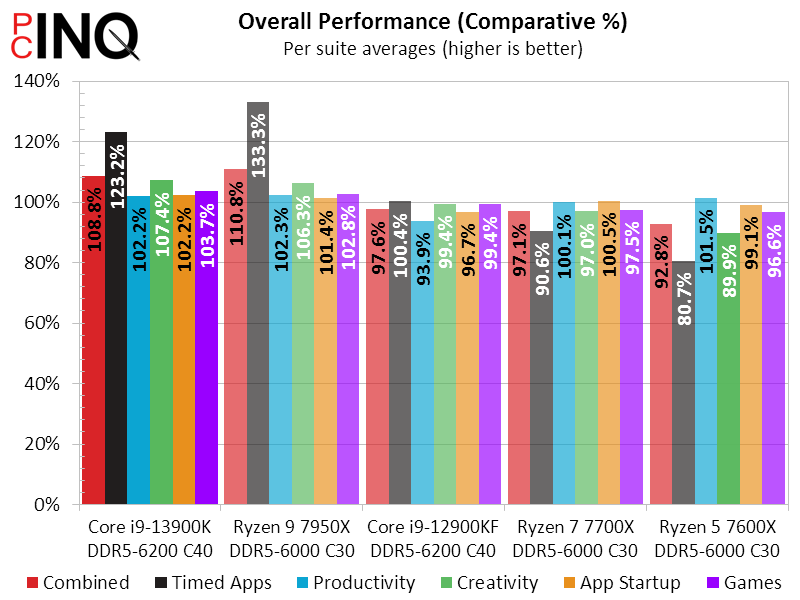
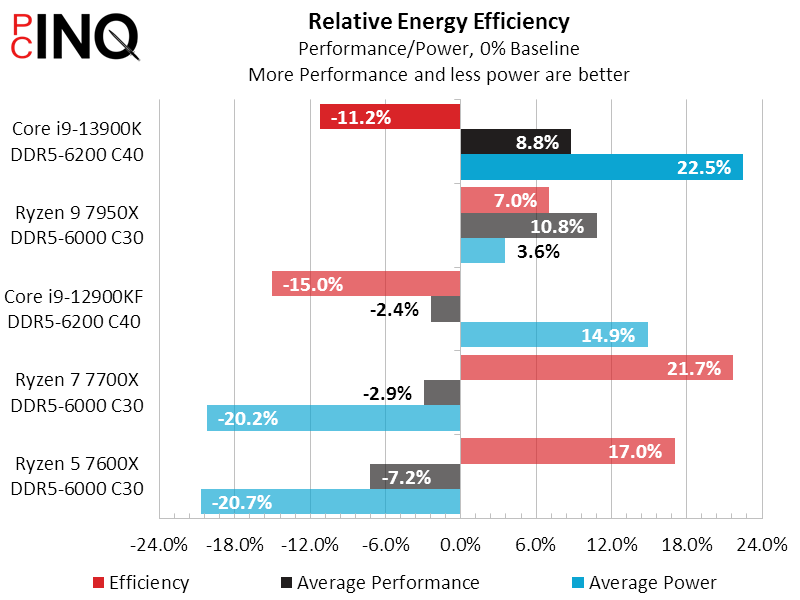
Fun thing: We thought that the high DRAM clocks we were hearing about were due to overclockers using insane voltage levels on 13th-Gen Intel Core processors, but here we are pushing our 12th-Gen CPU to new highs using nothing more than a 13th-Gen compliant firmware at a completely sane 1.35V. The 13900K went one setting past the 12900KF’s DDR5-6800, but it seems that firmware is far more important than core generation.
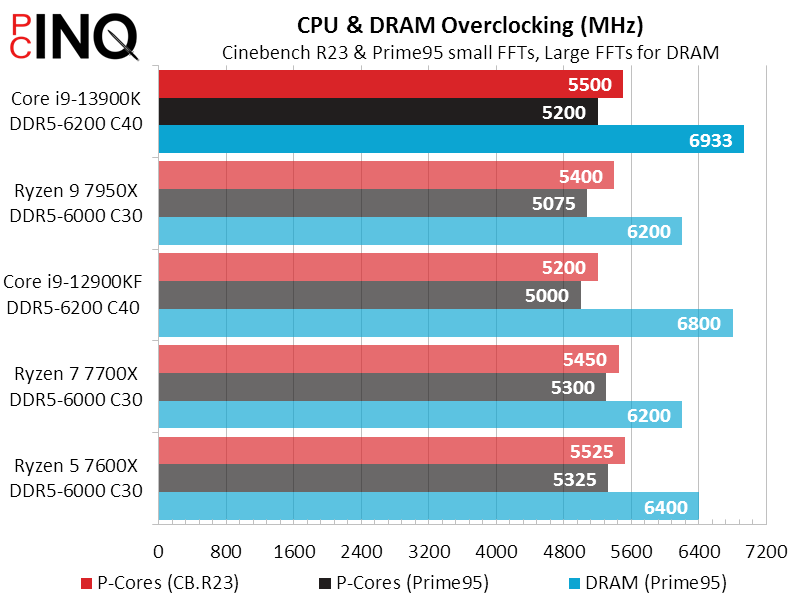

Do you want to see a performance-per-dollar chart if it shows Intel beating AMD? How about when the only AMD processor it beats is top-model 7950X? Cheaper processors tend to offer better value than expensive ones, as seen in the single-CCD 7700X and 7600X. As for the 12900KF…12th-Gen prices are no longer consistent and a recently-spotted $500 12900K would have score several percentage points higher in value than the 12900KF.

We’ve seen a bunch of websites tout the value of Intel’s Core i9-13900K as some kind of AMD crusher, but that kind of analysis hardly seems genuine: The 7700X we tested a month ago smashes the 13900K’s value. But, you say, the 13900K performs better than the 7700X? The same is true for the Ryzen 9 7950X outperforming the 13900K. What we have in the Core i9-13900K is a CPU that splits both the performance and pricing differences between the Ryzen 7 7700X and the Ryzen 9 7950X.
It may not be fast enough to earn the Excellence award achieved by the Ryzen 9 7950X, but it’s still faster than every other CPU we’ve tested. It may not be cheap enough to go head to head with the Ryzen 7 7700X’s price, but its performance is a full tier higher. Opening up its own market niche between the 7700X and 7950X, the Core i9-13900K is the best desktop CPU at or near its price.
| Intel Core i9-13900K | |
| Pros | Cons |
|
|
| The Verdict | |
| Only slightly short of the Ryzen 9 7950X’s performance, Intel’s Core i9-13900K undercuts the price of that competitor by a wide margin. | |

